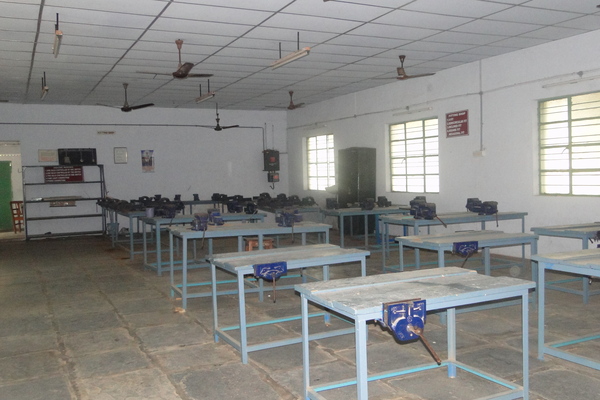


Workshop practice is a basic subject for all branches of Engineering and Technology. This subject is aimed at providing a basic understanding of the fundamentals of practical sections; mainly planning, marking, cutting, filing, wiring connections, standards & conventions of wiring, the tools, the use of measuring instruments in engineering applications, and plumbing tools and practices. The topics covered are based on the syllabus for studies in engineering. The subject is planned to include sufficient practices which would help the student to understand the principles of manufacturing.
Carpentry is the process of shaping timber using hand tools. The products produced are used in building construction, such as doors and windows, furniture manufacturing, patterns for moulding in foundries, etc. Carpentry work mainly involves the joining together of wooden pieces and finishing the surfaces after shaping them. Hence, the term "joining" is also commonly used for carpentry. A student studying the fundamentals of woodworking has to know about timber and other carpentry materials, woodworking tools, carpentry operations, and the method of making common types of joints.
Sheet metal work has its own significance in engineering. Many products, which fulfill household needs, decoration work, and various engineering articles, are produced from sheet metals. Common examples of sheet metal work are hoopers, canisters, guards, covers, pipes, hoods, funnels, bends, boxes, etc. Such articles are less expensive, lighter in weight, and in some cases, sheet metal products replace the use of castings or forgings.
Welding is a process for joining two similar or dissimilar metals by fusion. It joins different metals/alloys, with or without the application of pressure and with or without the use of filler metal. The fusion of metal takes place by means of heat, which may be generated either from combustion of gases, electric arc, electric resistance, or chemical reaction. Welding provides a permanent joint but normally affects the metallurgy of the components. It is therefore usually accompanied by post-weld heat treatment for most of the critical components. Welding is widely used as a fabrication and repairing process in industries. Some of the typical applications of welding include the fabrication of ships, pressure vessels, automobile bodies, offshore platforms, bridges, welded pipes, sealing of nuclear fuel and explosives, etc.